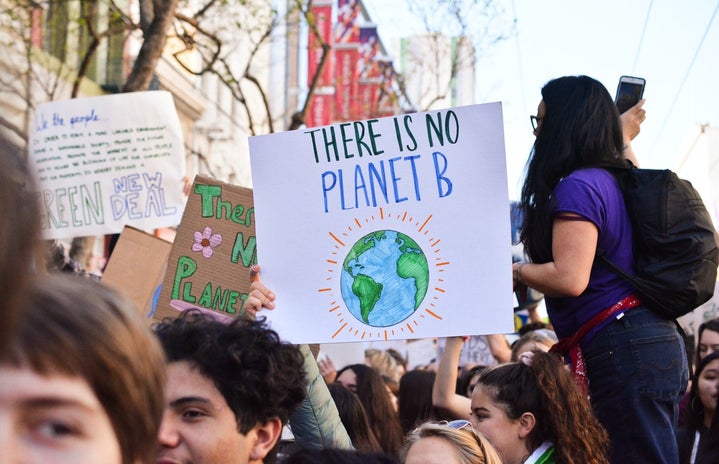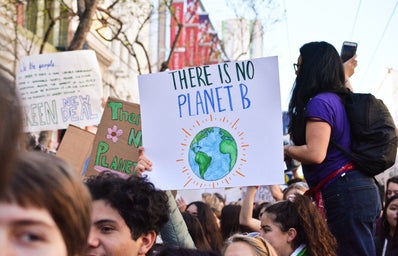On October 28, St Andrews partnered with the renewable energy non-profit Liter of Light to send “messages of hope” to COP26 – the UN’s international climate summit that just wrapped up last Friday in Glasgow. As night fell, dozens of solar powered lanterns lit up on Sally’s Lawn, and through the darkness, the phrases “actions not words”, “net 0 by 2035” and “save the planet” became visible from high above town.
These messages were intended to signal the university’s support of strong, substantive climate policy on the international scale, but what is the University doing closer to home to prioritize sustainability?
St Andrews aims to become carbon neutral by the year 2035, a whole 10 years before Scotland’s 2045 target and 15 years before the global 2050 benchmark. To achieve that aim and progress sustainability here in town, the University is investing in initiatives to lower its carbon footprint, reduce waste, and support the local economy.
Large-Scale Carbon Reduction and Offsetting
The University is already making progress to reduce carbon, with a 15 percent emission reduction to date. Renewable energy is central to this plan, and St Andrews is making substantial investments to secure clean energy sources. The University is set to build a six-turbine wind farm in the next several years, which will provide enough energy to power every university building and reduce emissions by a further 50 percent.
The University’s land management policies are a huge part of their plan to become carbon neutral by 2035. The University is building green corridors and wildlife sanctuaries around its estate, which will act as sinks for atmospheric carbon which will compensate for any unavoidable emissions. These green spaces will also become breeding grounds for pollinators, sanctuaries for local wildlife, and outdoor havens for community wellbeing. Early this November, volunteers from the University community helped with this initiative by planting over 600 trees in a new green corridor behind the Sports Hall.
Consumption on Campus
The University’s sustainability strategy includes big plans to reduce environmental impacts through better consumption practices, specifically in its food and dining systems. St Andrews has increased plant-based options by 50 percent in all dining facilities. The University also increased purchases of locally supplied food by 60 percent, using vendors like the Balgove Farm and Fisher and Donaldson’s Bakery to stock kitchens across campus, both reducing food miles and supporting the local economy. The University also has a “KeepCup” campaign – bringing your own reusable mug to any University café saves you 10 pence on hot drinks.
The University is also supporting a more circular economy with its StAndReuse campaign. Each year, in partnership with Transition St Andrews, this campaign prevents over 5,000 kilograms of waste from entering landfills by providing students with modes to share, donate, or repurpose unused textbooks, clothes, school supplies, and home goods. To date, over 35 tons of goods have been saved from landfills, amounting 140 tons of avoided carbon emissions.
Research, Education, and Innovation
The Golden Dandelion Stamp is a new system designed to integrate sustainability into everyone’s academic experience at St Andrews. Modules that teach topics, skills, or themes related to sustainability will be awarded a Golden Dandelion Stamp, which will help students find and select classes that will progress their environmental and social justice education.
Outside of the classroom, researchers from St Andrews are participating in innovative energy research at the Eden Campus, a University managed biomass plant which is nationally recognized for clean energy innovation. Research into new battery technology, hydrogen energy, and converting CO2 into fuels takes place here. The campus also produces clean energy which is used to heat 43 campus buildings and over 1,200 student rooms.
St Andrews’ ambitious environmental policy is much in line with its call for “actions not words”. By investing in innovation, education, and circularity for sustainability, the University is leading by example. This type of action is the best sign any institution can send to global leaders as we push for large scale climate action now.


